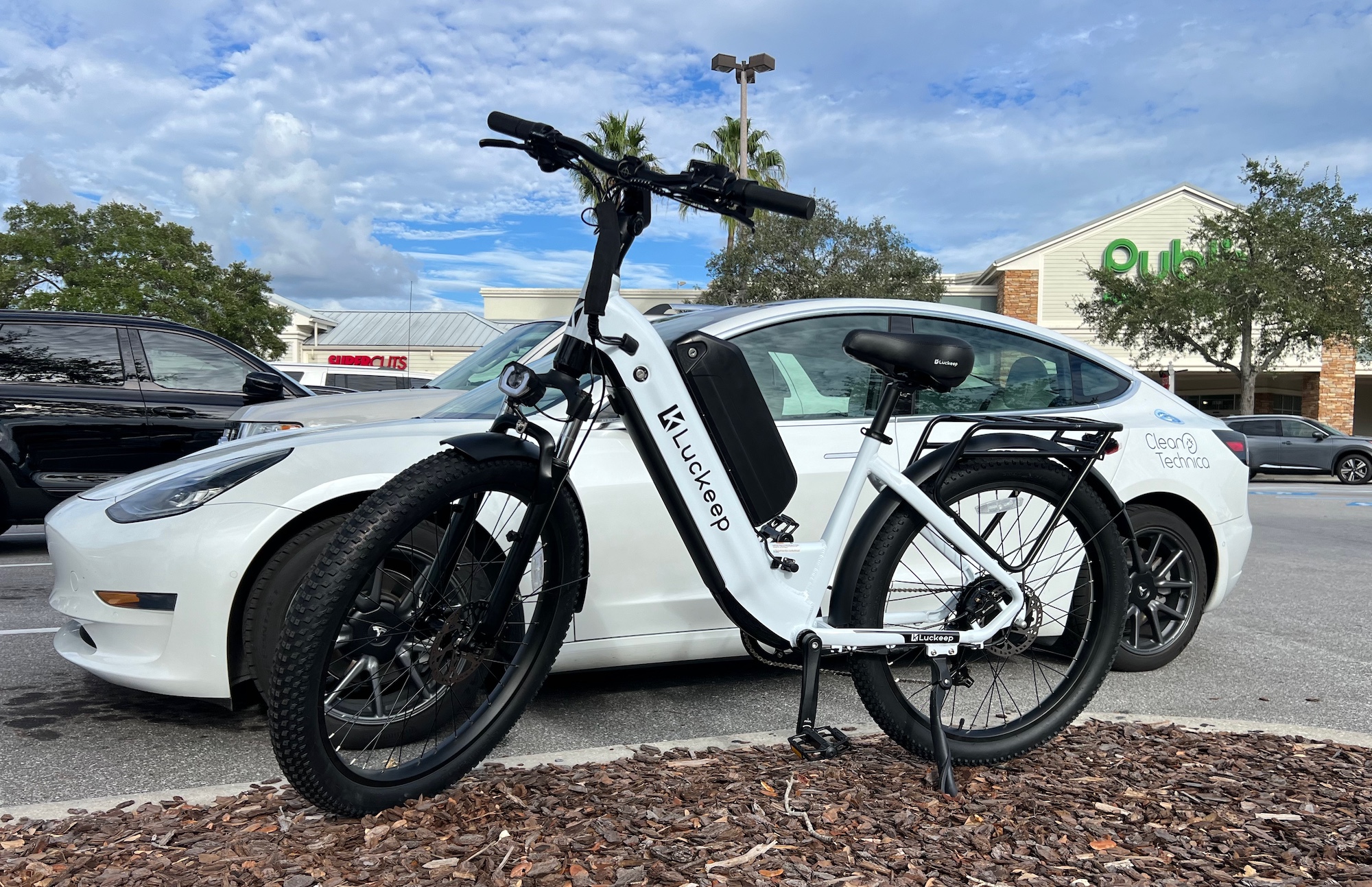Sign up for daily news updates from CleanTechnica on email. Or follow us on Google News!
World Ocean Day is observed on Saturday, June 8. It’s a tradition that the United Nations started celebrating in 2008, as managing ocean ecosystems for resilience is essential to a flourishing human population and global biodiversity. Towns and cities and organizations across the globe are commemorating World Ocean Day with all kinds of sponsored activities — all in attempts to raise awareness about how ocean health is connected to thriving communities, strong local food systems, and long term climate stability.
The commemoration is important, as it’s too easy for us to ignore the oceans, which contain 97% of all the water on the planet and plummet to an average depth of more than two miles. Each year, the oceans absorb 23% of human-caused carbon dioxide (CO2) emissions and capture 90% of the excess heat created by these emissions.
The UN says climate change and human activities are causing the health of oceans to decline at an alarming rate. Ocean temperatures are rising rapidly, and the oceans are overwhelmed. The UN cites the significant harms to the ocean coming from litter, pollution, and overfishing. These jeopardize marine life, create water acidification that degrades ecosystems, and force rising temperatures and sea levels. As waters become more acidic, the number of “dead zones” — which are deserted by wildlife fleeing suffocation — increase exponentially.
Sami Asad, professor of sustainability and ecology at Tomorrow University of Applied Sciences, explains that this year’s World Ocean Day themes of restoration and calls to catalyze action are critical responsibilities for global leaders.
“Worryingly, an estimated 20 million metric tons of plastic litter end up in the environment every year, with this volume expected to increase significantly by 2040. To combat this, it’s crucial that organizations invest in science-based sustainability and capitalize on sustainable innovations.”
Blue Food Systems are Integral to World Stability
Danielle Nierenberg, president of Food Tank, describes how the livelihoods of more than 800 million people depend on blue food systems, or ones that rely on aquaculture to feed communities. More than 90% of blue food production faces substantial risks from climate change and environmental degradation.
Nine out of ten working fishers are involved in small scale operations, which yield about 40% of the total catch, but 75% of global industrial fishing is untracked. Nierenberg calls upon us to hold companies and food producers accountable, possibly by drawing upon technology from companies which are using emerging technologies to bring transparency to seafood supply chains.
Here’s a list of 24 organizations that support sustainable fishing.
Efforts to Lead for our Seas
And, while we’re at it, let’s acknowledge some other organizations that are working to protect the oceans. The Coral Reef Alliance combines new technology and conservation techniques to save the world’s reefs. The Surfrider Foundation and The Ocean Conservancy work on the many challenges facing our oceans. The goal of Earth Island Institute’s Plastic Pollution Coalition is to rid the world of toxic plastic pollution.
Importantly, the International Union for Conservation of Nature (IUCN) points out that around 60% of the global ocean is beyond national jurisdiction. These waters are some of the least well-known and least protected areas on earth, yet they provide essential services for the world’s ecosystem. The world’s oceans are subject to increasing international interest and human activity. Use has grown in frequency and intensity over recent decades. This threatens marine biodiversity and puts the health and resilience of the ocean at risk.
In June 2023, the United Nations adopted a new treaty under the United Nations Convention on the Law of the Sea, the Agreement on the Conservation, and Sustainable Use of Marine Biological Diversity of Areas beyond National Jurisdiction. This is also known as the high seas biodiversity treaty.
The IUCN argues that this year, world leaders must strive for a fully functional high seas biodiversity treaty. All signing nations should be supported in the ratification process to bring this treaty into force, moving almost half of the planet’s surface into better regulation through international law. Similarly, the IUCN says we need to increase the number of ratifying countries for the global agreement on unsustainable fisheries’ practices and subsidies, so that the world’s fish stocks are not overexploited. We must also continue to make the scientific, legal, and moral case for a moratorium on deep-sea mining.
Finally, as IUCN has explained, the protection and restoration of marine life, and planetary biodiversity in general, need to be incorporated in the upcoming global plastic pollution treaty, strengthening its links with the Biodiversity Plan’s targets and the high seas biodiversity treaty.
The Possibility of Blue Energy as a Renewable Option
Ocean tides, currents, and waves represent marine hydrokinetic energy — the energy of moving seawater. Ocean energy, while renewable, clean, and plentiful, must be converted to electricity before it can replace more traditional forms of energy. To do this requires technology — machines of one kind or another.
Blue energy, sometimes called ocean energy, refers to technologies that harvest renewable energy from the oceans, excluding winds. Ocean energy can be harvested in many forms:
- Wave energy: Depends on wave height, speed, length, and the density of the water
- Tidal stream energy: Generated from the flow of water in narrow channels
- Tidal range technologies (or tidal barrages): Exploit the difference in surface height in a dammed estuary or bay
- Ocean thermal energy conversion: Uses temperature differences between surface and subsurface water to generate energy
- Salinity gradient power: Relies on the difference in salinity between salt and freshwater
Given the prohibitive cost of true experiments, often the most efficient approach to these problems lies in computer simulation. To this end the Southeast National Marine Renewable Energy Center (SNMREC) and the Center for Ocean Atmosphere Prediction Studies (COAPS) at the Florida State University have teamed up to use state-of-the-art ocean circulation models to investigate these interactions. Such research and development can further draw positive attention to the importance of the world’s oceans as an essential resource.
Final Thoughts
The 2025 UN Ocean Conference will take place in Nice, France, from June 9–13, 2025, co-hosted by France and Costa Rica. Its overarching goal is to provide substantive support and capacity-building for the Sustainable Development Goals (SDGs) and their related thematic issues, including water, energy, climate, oceans, urbanization, transport, science and technology. This year’s conference aims specifically to support further and urgent action to conserve and sustainably use the oceans, seas, and marine resources for sustainable development — aka SDG 14. Many current studies about the integration of technology to enhance ocean sustainability will be on the agenda.
Let’s hope that world leaders will endow the 2025 UN Ocean Conference designees with the opportunity to draft language that will make real substantive change in how world uses and protects the oceans.
In the meantime, World Ocean Day offers individuals around the planet the opportunity to learn and become empowered change agents as protectors of the oceans.
Have a tip for CleanTechnica? Want to advertise? Want to suggest a guest for our CleanTech Talk podcast? Contact us here.
Latest CleanTechnica.TV Videos
CleanTechnica uses affiliate links. See our policy here.





